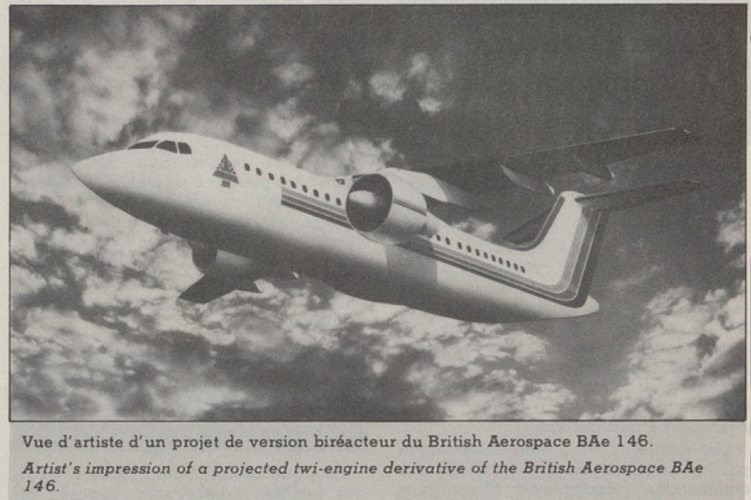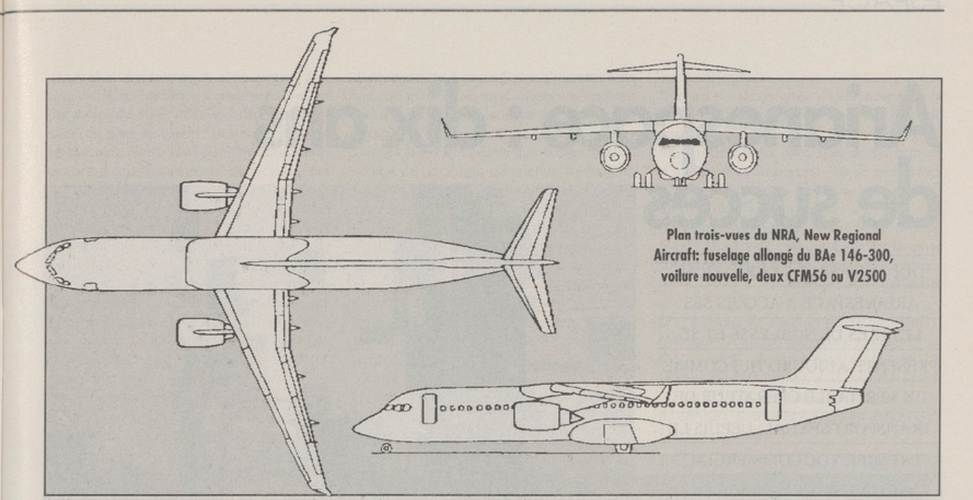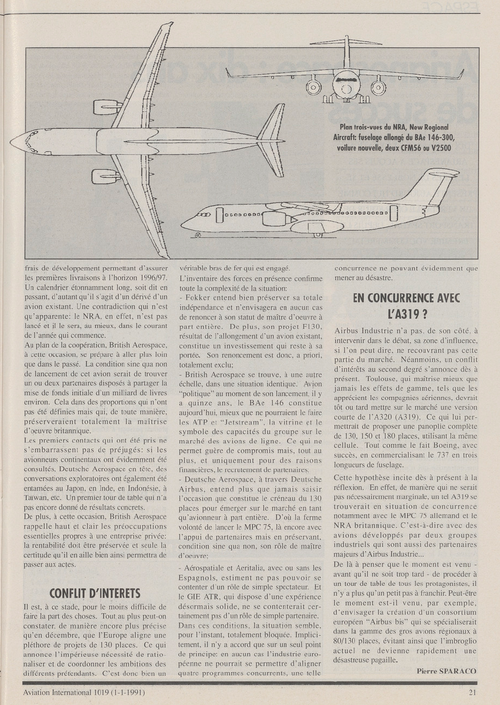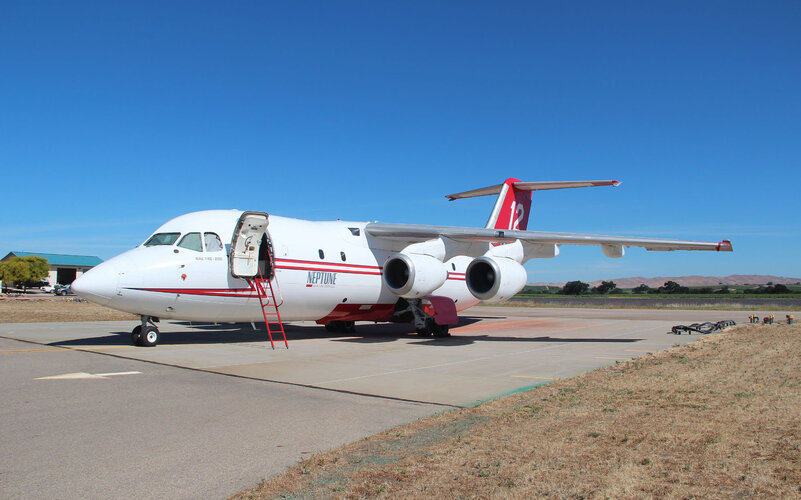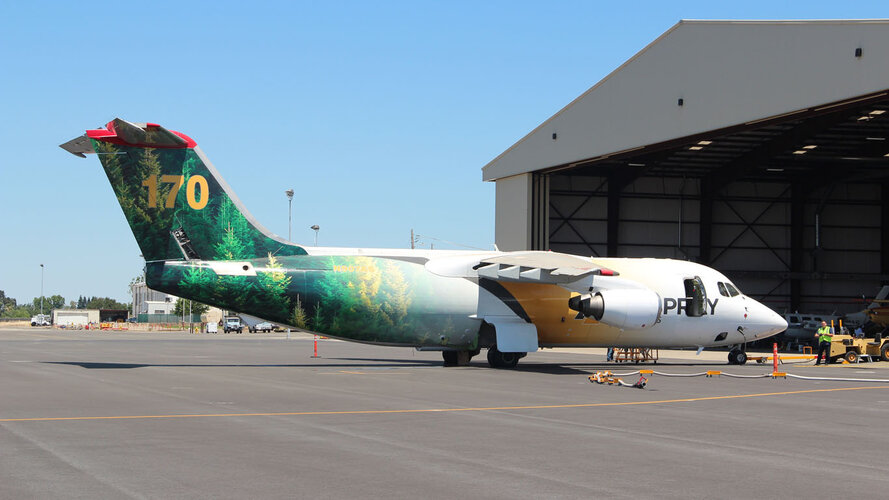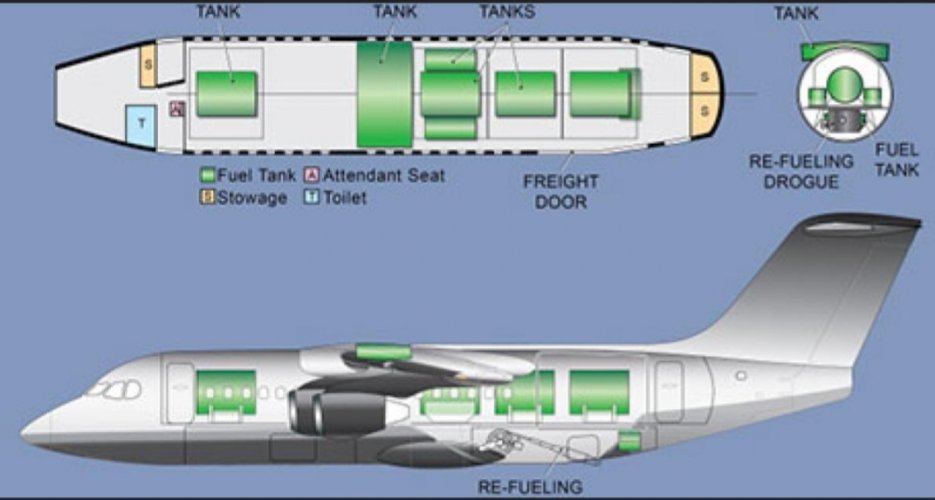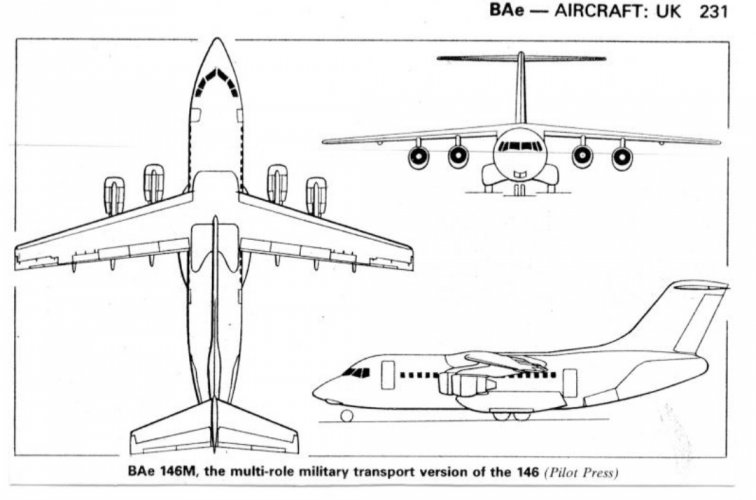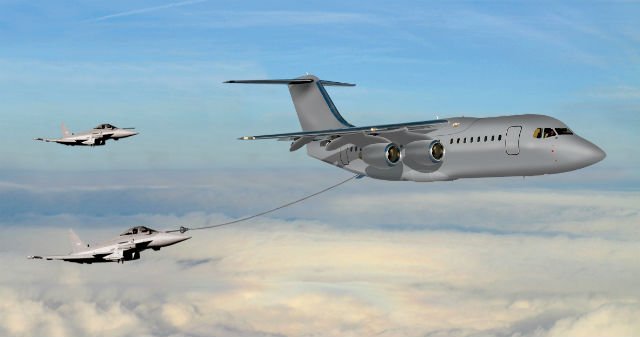You are using an out of date browser. It may not display this or other websites correctly.
You should upgrade or use an alternative browser.
You should upgrade or use an alternative browser.
BAe 146 Developments
- Thread starter boxkite
- Start date
- Joined
- 25 July 2007
- Messages
- 4,299
- Reaction score
- 4,187
There were fire bomber versions of BAe-146 and RJ-85.
Interesting. Are you talking about some early BAe projects or the later conversions?
BAE Systems Regional Aircraft had some input into tanker conversions by third party firms - Air Spray, Conair, Neptune, Tronos, etc.
Silencer1
That now I am the Ruler of the Queen's Navee!
- Joined
- 3 August 2009
- Messages
- 897
- Reaction score
- 582
I only seen third party conversions - and some of them have quite extensive changes of basic airframe.Interesting. Are you talking about some early BAe projects or the later conversions?
For example, Conair RJ 85 with huge external conformal tanks.
Don't know about BAE/Avro activiteies in designing of tankers of fire bombers - but I'm not competent in this subject.
As a side note, I only now figured out, that BAE 146 and his derivatives have unique engine layout for the civil aircraft. Such combination of high-wing and 4 podded turbojets are coomon for the militarty cargo aircraft, but I couldn't remember any similar civil aircraft.
P.S. Conair company offer impressive virtual tour, demonstrating it's capabilities in firefighting, fleet of aircraft, infrstracture - Virtual hangar
Attachments
Last edited:
Turboprops require structural upgrades on the fuselage to protect vitals during prop failure. They are also too loud for passenger operations in western countries, so cannot imagine they will be popular. People accept the high pitch of jets better.
Silencer1
That now I am the Ruler of the Queen's Navee!
- Joined
- 3 August 2009
- Messages
- 897
- Reaction score
- 582
I agree with you about necessary protection of structure for propeller aircraft. Although, we could remember a lot of current turboprop airliners - and propeller noise is acceptable for their service.Turboprops require structural upgrades on the fuselage to protect vitals during prop failure. They are also too loud for passenger operations in western countries, so cannot imagine they will be popular. People accept the high pitch of jets better.
BlackBat242
OK, I changed my personal text ;)
- Joined
- 10 April 2013
- Messages
- 1,459
- Reaction score
- 4,187
There are many, many turboprop high-wing regional airliners in current airline service in the US, Canada, etc.Turboprops require structural upgrades on the fuselage to protect vitals during prop failure. They are also too loud for passenger operations in western countries, so cannot imagine they will be popular. People accept the high pitch of jets better.
For example: De Havilland Canada DHC-8. 1,258 built as of March 31, 2019, still in production (Dash 8 Series 100 production ended in 2005, Dash 8 Series 200 & 300 production ended in 2009, Series 400 1983–present).
The ATR 42 is a produced by Franco-Italian manufacturer ATR, produced 1984-present (484 as of October 2020).
The ATR 72 is the enlarged 42, produced from 1988-present (1,000 as of 17 July 2018).
- Joined
- 3 September 2006
- Messages
- 1,475
- Reaction score
- 1,464
There were fire bomber versions of BAe-146 and RJ-85.
Attachments
- Joined
- 11 March 2012
- Messages
- 3,244
- Reaction score
- 3,171
Many light turboprops (e.g. Beechcraft King Air) simply have an extra layer of "armor" glued/riveted/bolted to the outside of the fuselage in line with the propeller arcs. Bolts allow this sacrificial layer to be quickly replaced. The primary function is to absorb impacts from ice ice thrown from propellers.I agree with you about necessary protection of structure for propeller aircraft. Although, we could remember a lot of current turboprop airliners - and propeller noise is acceptable for their service.Turboprops require structural upgrades on the fuselage to protect vitals during prop failure. They are also too loud for passenger operations in western countries, so cannot imagine they will be popular. People accept the high pitch of jets better.
ZacYates
LHX SuperTeam fanboy
- Joined
- 26 December 2012
- Messages
- 156
- Reaction score
- 136
1635yankee
Recovering aeronautical engineer
- Joined
- 18 August 2020
- Messages
- 550
- Reaction score
- 755
Many years ago, when Lycoming was building its turbines in Stratford, I was a test engineer on the ALF502. When I went to the NGTE to support some testing, I asked why two four engines and why turbofans. The choice of turboprops was marketing. At the time, there a twin would have been much more expensive than the four-engined aircraft built.
Last edited:
- Joined
- 13 June 2007
- Messages
- 2,172
- Reaction score
- 3,075
And a couple more of the firetanker conversions. Neither have the chunk external tank of the Conair design, going with internal tankage strapped to the main floor. Took these pics on a trip to California in 2017.I only seen third party conversions - and some of them have quite extensive changes of basic airframe.
For example, Conair RJ 85 with huge external conformal tanks.
Don't know about BAE/Avro activiteies in designing of tankers of fire bombers - but I'm not competent in this subject.
As a side note, I only now figured out, that BAE 146 and his derivatives have unique engine layout for the civil aircraft. Such combination of high-wing and 4 podded turbojets are coomon for the militarty cargo aircraft, but I couldn't remember any similar civil aircraft.
P.S. Conair company offer impressive virtual tour, demonstrating it's capabilities in firefighting, fleet of aircraft, infrstracture - Virtual hangar
Enjoy the Day! Mark
Attachments
- Joined
- 25 July 2007
- Messages
- 4,299
- Reaction score
- 4,187
And a couple more of the firetanker conversions. Neither have the chunk external tank of the Conair design, going with internal tankage strapped to the main floor. Took these pics on a trip to California in 2017.
Nice shots, Mark.
Airtanker 12 (inheriting its tail number from a retired P2V), N476NA, is a Neptune Aviation Services conversion. The first such conversions were done by Tronos Aviation of Summerside, PEI.
Airtanker 170 is an Air Spray conversion. Some images can be seen here:
-- https://fireaviation.com/2018/03/12/tanker-170-debuts-at-aerial-firefighting-conference/
Air Spray retardant tank photo: https://fireaviation.com/wp-content/uploads/2018/03/T-170_-4.jpg
Air Spray retardant tank drawing: https://fireaviation.com/wp-content/uploads/2018/03/T-170_-3.jpg
- Joined
- 21 May 2006
- Messages
- 2,993
- Reaction score
- 2,243
I haven't seen these mentioned yet:
146MT military tanker
based on 146-200 with large freight door
4 fuel tanks in the fuselage
2 hose units under the wingtips
IFR probe
25,000 lb fuel transfer capacity
146MRL military rear loader
based on 146-100 with new rear fuselage with a ramp (could be opened in flight)
floor lowered and strengthened
new UC: tandem main wheels in sponsons, larger front wheels
saddle tanks
IFR probe
navigator's station
could load e.g. 2 HMMWV or 4 pallets (C-130K can load 3 HMMWV or 5 pallets)

146N naval COD
Carrier-capable version
based on 146-100 STA with large freight door
extendable nose wheel (to increase AOA on takeoff, and to help stow the aircraft in the hangar)
Folding wings, with the fold just outboard of the engines.
Landing tests were done at USN Patuxent River in 1986 using a 146-100 demo aircraft
all are listed in 'BAe 146: Britain's best-selling jet airliner' from Key Publishing.
Includes a 3-view of the MRL and artist's impressions of the MRL and 146N.
Found the following cut-away drawing of BAe 146 airborne tanker
(Source: https://www.spsmai.com/aerospace/?id=2425)
&
3-view drawing of the BAe 146M with rear beaver tail door arrangement
(Source: https://forum.keypublishing.com/showthread.php?3896-BAe-146STA)
Regards
Pioneer
Attachments
Last edited:
- Joined
- 21 May 2006
- Messages
- 2,993
- Reaction score
- 2,243

UK says 'no thanks' to BAe 146 tanker
The UK Ministry of Defence has distanced itself from any possible future use of the BAe 146 as a refuelling tanker.

BAE offers BAe-146 air tanker variant
www.spsmai.com
Regards
Pioneer
Attachments
Last edited:
Similar threads
-
Fighting to be Heard: The Complete History of the BAe 146
- Started by Jet-X
- Replies: 9
-
BAE Systems Mi-24 upgrade
- Started by Jason Dykstra (Wyvern)
- Replies: 6
-
-
British Aerospace NBJ (New Business Jet)
- Started by zebedee
- Replies: 0
-
BAE HALO Stealth technology Demonstrator
- Started by Vulcan652
- Replies: 36



